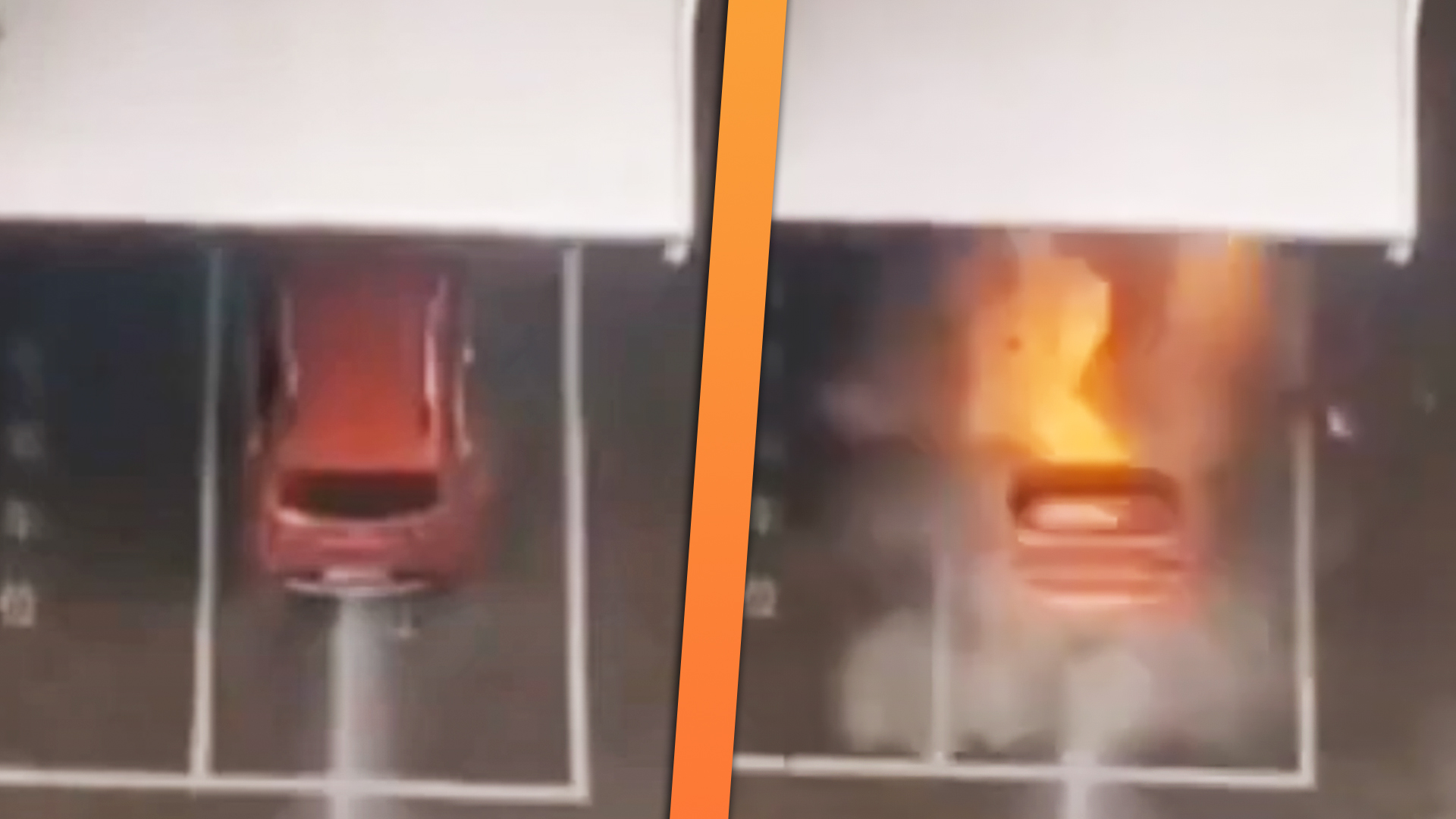

Let’s get one thing out of the way first. Though definitive global data is hard to come by in this transitional moment, electric vehicles are about as likely to catch fire following a crash or malfunction as internal combustion cars. So this is not an exposé about the hidden dangers of EVs or anything like that. Instead, consider this a reminder that while electric car fires present unique challenges compared to gas-fueled ones, they also bring similar risks—like a big, old fashioned explosion.
Video of the incident, which happened in Sanming, China, popped up on YouTube earlier in the week. You see firefighters shooting a jet of water at a small electric hatchback parked at a covered charging station, having taken cover behind a concrete barrier separating the parking lot complex. Within the first three seconds, the car suddenly explodes outward, sending doors, tailgate, and sheet metal bits in every direction like a scene straight out of a mafia crime thriller.

The car, which appears to be a Chinese-market BAIC EX360, started billowing smoke as it was charging and remained plugged in as firefighters began dousing it in a bid to cool the 48 kWh battery down. There’s been no official announcement about why it exploded a few minutes later, but it’s pretty easy to speculate. Putting out a lithium-ion battery fire takes special tactics and chemical extinguishers for many reasons; one of them is that water and lithium react to make highly-flammable hydrogen gas. It’s possible the car’s interior was filled with it and ignited after whatever electrical condition was causing the smoke threw off an errant spark.
It is technically possible to drown an electric car battery fire with enough water, but you always run the risk of re-ignition hours or even days later. It’s reached a point where Tesla recommends letting the cars burn themselves out if they do not pose a threat to life or property. Lithium-ion battery packs serve as a useful storage container for energy. However, like a bottle of human emotions, it will ruin everyone’s day if unleashes that all at once.
EV fires have spawned advancements in safety technology to better equip first responders. In 2017, the U.S. Fire Administration worked with Oak Ridge National Laboratories to develop an improved DC Hot Stick. The new prototype looks like the end of a jumper cable. It works by detecting alternating current in wires or conductive materials. You clamp the hot stick on a surface, and if the light turns red, do not touch because it is carrying a charge.
Again, this is not an excuse to diss electric vehicles. But it’s a hard truth that we’ve got work to do making electric cars safer for everyone—especially first responders.
Got a tip? Send us a note: tips@thedrive.com